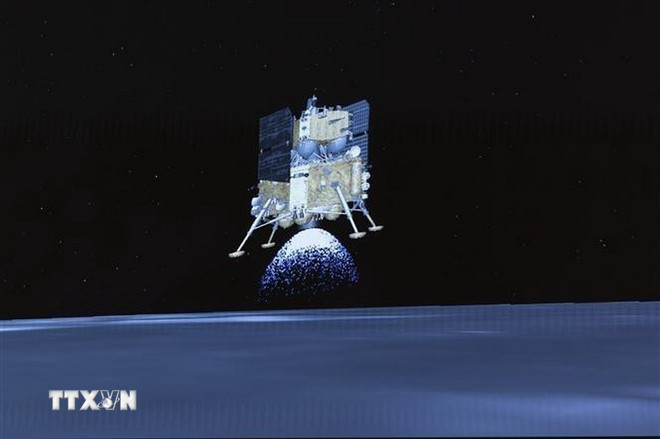Humanity entered the 2020s with remarkable breakthroughs in research on the Moon - Earth's only natural satellite and also the only large celestial body near Earth.
In 2023, India became the fourth country in the world to successfully land a robotic station on the Moon's surface.
Most recently, the US National Aeronautics and Space Administration (NASA) announced the crew of the upcoming "Artemis 2" spacecraft - a mission that will bring humans back to the Moon for the first time in half a century.
As a result of these exploration and scientific research missions, humanity's understanding of the composition, internal structures and processes, as well as other characteristics of the Moon will continue to deepen.
In this article, we would like to introduce to our readers some of the most amazing discoveries about the Moon that humans have made thanks to the latest missions and research.
The Moon is moving away from the Earth
It is also worth recalling that in the 1960s and 1970s when American astronauts flew on the "Apollo" spacecraft to land on the Moon, they installed reflectors on the surface of the Moon so that laser beams projected from Earth could reach the surface of the Moon, then be reflected and returned to Earth.
A series of scientific experiments called "Earth-Moon Laser Ranging" were conducted: Scientists shined lasers on the Moon aimed at the locations of reflectors previously installed on the Moon by astronauts.
Then, by calculating the time from when the laser beam was projected, reflected and returned to Earth, and was received by specialized equipment, scientists measured the distance from Earth to the Moon with extremely high precision.

By doing so, scientists have accurately measured that the Moon is 384,000km away from Earth. Not only that, they have also discovered that the Moon is gradually moving away from Earth at a rate of about 3.8cm per year.
That means that in about 600 million years, the Moon will be so far away from Earth that it will no longer be able to cover the Sun during a solar eclipse, or in other words, total solar eclipses will be a thing of the past.
The Moon was formed from the Earth's crust.
The origin of the Moon is a fascinating story indeed. According to our current understanding, the Moon was formed when a Mars-sized protoplanet called Theia crashed into the primordial Earth, throwing a number of fragments of various sizes into space.
Some of these fragments, as they traveled through space, merged together to form the Moon.
Scientists recently analyzed zircon crystals in pieces of lunar rocks brought back by astronauts on the Apollo-17 mission.
By calculating the rate at which the uranium in these crystals was converted to lead, they determined that the Moon is about 4.46 billion years old, meaning that the catastrophic event that caused the Moon to form must have occurred very soon after the formation of the primitive Earth.
Movement of tectonic plates in the Moon's interior
During the study of the Moon, scientists have recorded quite a few earthquakes on the Moon. That shows that there is quite active movement of tectonic plates in the Moon's interior.

The landing part of the Chandrayaan-3 lunar research station (India) recorded an earthquake on the Moon on August 26, 2023. Previously, seismometers installed on the Moon by astronauts of the Apollo mission also recorded several earthquakes on this celestial body.
It is very likely that these earthquakes are caused by the Moon's tectonic plates moving and rubbing against each other inside the celestial body.
The Moon's crystals contain large amounts of water.
Scientists have determined that there is water on the Moon, but they are still trying to figure out exactly where the water is concentrated on this celestial body.
Recently, scientists analyzed lunar soil samples brought back to Earth by China's "Chang'e 5" automatic station and discovered that there are a large number of transparent crystals containing water on the Moon.
These crystals were likely formed by meteorites colliding with the lunar surface. They act like sponges absorbing water formed when hydrogen atoms from the solar wind blow down onto the lunar surface.
The invisible side of the Moon is more conductive

Scientists recently solved one of the Moon's biggest mysteries by analyzing data from the Korea Aerospace Research Institute (KARI)'s "Danuri" probe station.
They determined that the invisible side of the Moon has a stronger magnetic field than the side that is always visible from Earth. This also means that the surface of that side of the Moon is more conductive.
Scientists have yet to explain what causes this strange difference, although the high magnetism of the invisible side of the Moon's surface could be an indication that hidden water reserves are higher on that side./.
Source: https://www.vietnamplus.vn/nhung-kham-pha-kinh-ngac-ve-mat-trang-khien-nhieu-nguoi-bat-ngo-post1035547.vnp

































































































Comment (0)